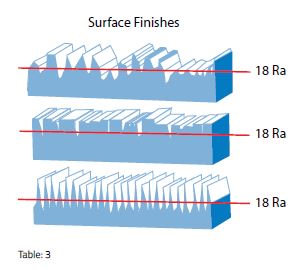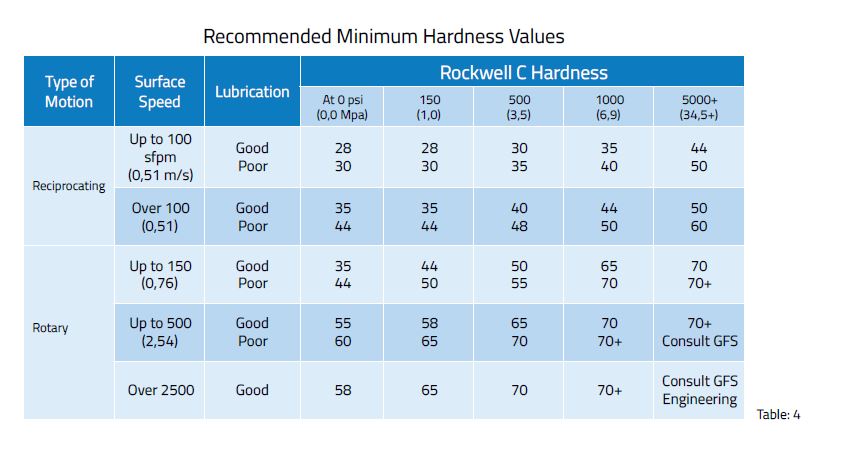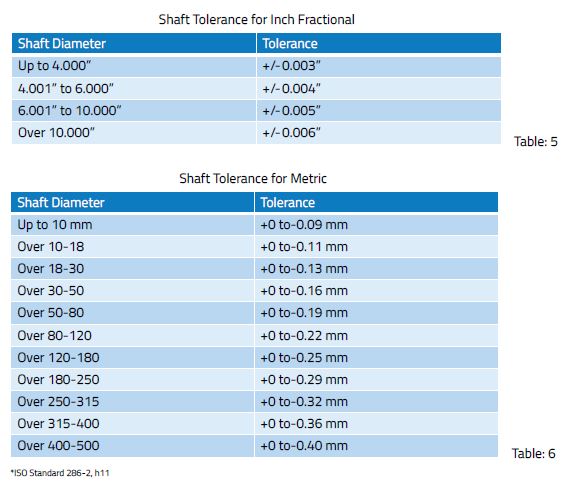
In rotating applications, proper surface finish is crucial for getting positive sealing and the longest seal life possible. Rotating surfaces that are too rough could create leak paths and can also be very abrasive. Unlike elastomer contact seals, PTFE lips can run on very smooth surfaces regardless of lubrication.
Due to their toughness and low coefficient of friction, PTFE lip seals – unlike seals made from other materials – slip over the high points of the mating surface and resist abrasion. The optimal surface finish for PTFE lip seal applications is shown above in table 3.
Dynamic surfaces with relatively rough finishes will result in higher wear rates, which reduces the seal life and could compromise performance. In addition, dynamic surfaces with a smoother than recommended finish may also decrease the seal’s effectiveness. The optimum surface roughness allows a film of the fluid being sealed to flow between the seal and mating surface, lubricating and extending the life of the seal.
PTFE rotary seal applications require a hard running surface on the dynamic portion of the hardware. The harder surface allows the use of higher reinforced seal material that will increase seal and hardware life. Softer running surfaces must use lower wear resistant material that won’t damage the hardware and normally yield shorter seal life.
A balance between seal material and dynamic surface hardness must be met to ensure the seal remains the sacrificial component. In table 4 (below), you’ll see a list of recommended minimum hardness values.
When the dynamic surface hardness is below 45 Rc, most seal materials will polish the running surface of the hardware and seal. This initial break-in period will lead the seal wear to taper off, depending on the material, surface finish and PV of the application.
When hardness exceeds 45 Rc, initial surface finish becomes more crucial to seal life. The hardness of the dynamic hardware surface affects the seal’s wear rate. In addition, some seal lip materials are abrasive and will wear softer metal shafts or dynamic components.
In general, finer surface finish means a better overall seal and hardware performance. The ideal hardness of the dynamic surfaces of the hardware is between 50 and 60 Rockwell C. The actual hardness used is normally a balance between the additional costs associated with finishing harder materials versus the maximum achievable seal life.
Shaft diameters should be held to the tolerances specified in tables 5 and 6, shown below.
For more PTFE rotary seal information, download Gallagher Seals’ rotary seal guide.


